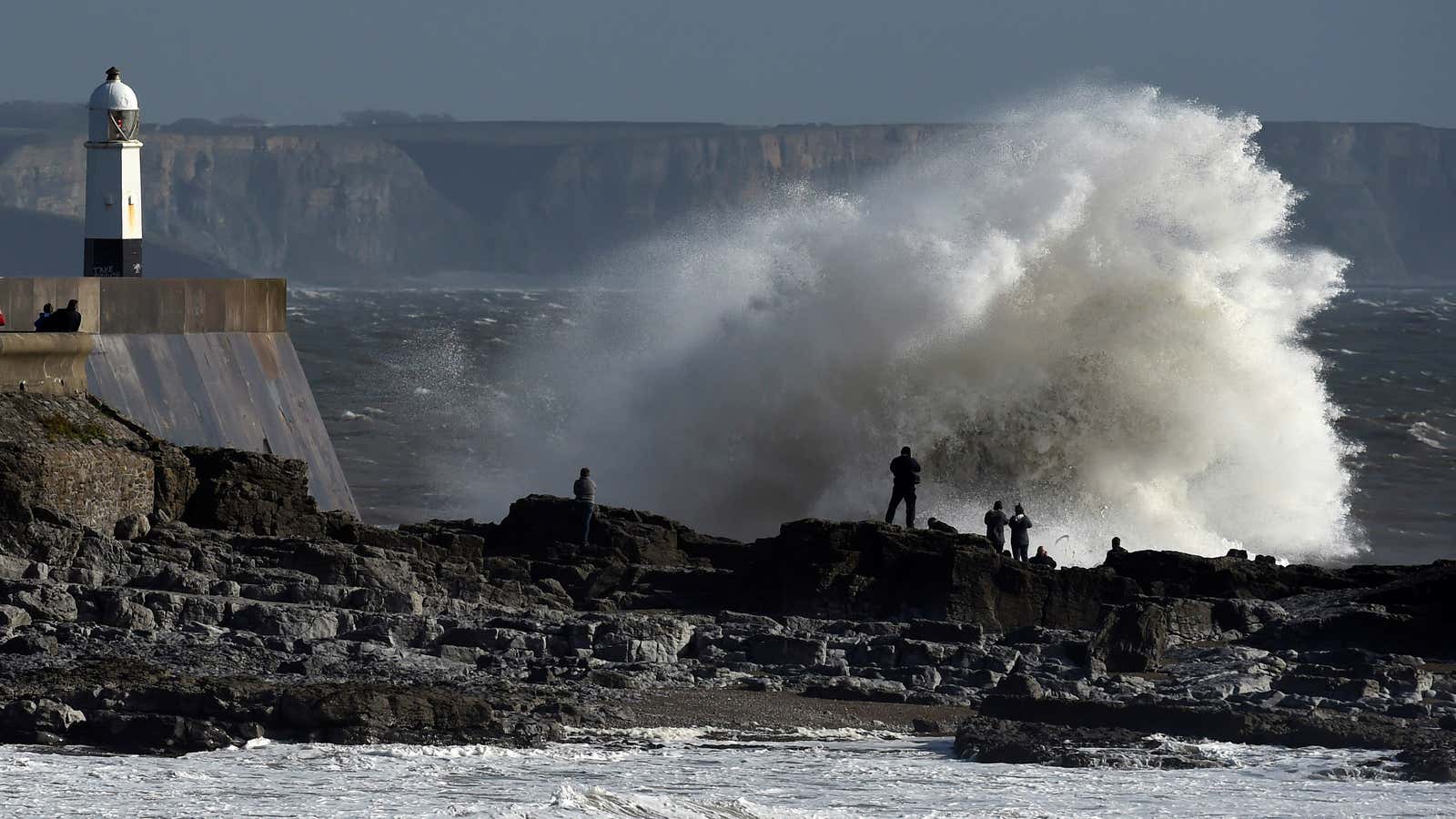It’s been 10 long weeks of 10 straight hurricanes.
The remnants of Hurricane Ophelia tore into southwest Ireland today (Oct. 16), the latest storm of the 2017 Atlantic hurricane season to break records.
This year is first in over a century—and only the fourth on record—to see 10 straight hurricanes, according to Philip Klotzbach, a hurricane researcher at Colorado State University.
The 2017 season has brought Franklin, Gert, Harvey, Irma, Jose, Katia, Lee, Maria, and Nate. Ophelia was upgraded to a hurricane on Oct. 11. The last time 10 consecutive Atlantic storms grew into hurricanes was in 1893.
There has never been a season with 11 straight hurricanes, so if the next tropical cyclone in the Atlantic strengthens significantly, 2017 will be an unprecedented year.
Ophelia, which at one point had reached category-3 strength, is the easternmost major Atlantic hurricane in recorded history. With sustained winds of 100 mph and gusts as high as 120 mph in some parts of Ireland, it is now officially the strongest Atlantic hurricane on record so far east this late in the year. There hasn’t been a category-2 hurricane so far north or east since Charley in 1992, according to Eric Blake of the US National Hurricane Center.
Ophelia is the sixth major hurricane (category 3 or higher) to form in the Atlantic this season, tying 1933, 1961, 1964, and 2004 for the most major hurricanes through Oct. 14, according to Klotzbach.
Ophelia hit Ireland as a post-tropical cyclone, a system that is typically not symmetrical in shape and has varying temperatures across the storm area, though can be as strong as a hurricane.
The strongest storm to hit Ireland in more than 50 years (Hurricane Debbie made landfall in 1961 and killed 15), Ophelia has Irish officials on high alert: it’s the first time ever that Met Éireann, the Irish weather office, has issued a red-wind warning (the highest level), for the entire country. At least three deaths have been reported and 360,000 people are without power.
The size of the storm is larger than the country itself:
Weather experts predicted the 2017 Atlantic season would have more named storms than usual because of a combination of a weak El Niño, above-average ocean-surface temperatures, and weaker vertical wind shear. Climate change is also likely contributing to hurricanes staying stronger for longer periods of time.
Ophelia’s appearance in the northeastern Atlantic isn’t entirely unexpected. According to Live Science, a 2013 study in the Geophysical Research Letters journal found that western Europe could see more hurricanes as warmer waters in the eastern Atlantic caused by rising global temperatures widen the potential area for major hurricane development. So storms can stay stronger, for longer, and maintain their tropical characteristics as they reach Europe.
